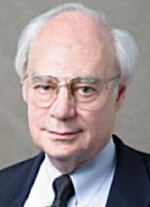
|
|
John H. Lienhard (above), author and voice of The Engines of Our Ingenuity, is professor emeritus of mechanical engineering and history at the University of Houston, well known for his researches both in the thermal sciences and in cultural history. Forhis Engines, Dr. Lienhard received the ASME Medal for contributions to the public understanding of technology, the 1991 Portrait Division Award from the American Women in Radio and Television, and the 1998 American Society of Mechanical Engineers Engineer-Historian Award. He was named one of five finalists from among the 1,300 entrants in the 1993 New York Festival International Radio Competition. E-mail him at jhl@uh.edu.
|
These texts are not presented as a full portrait of Lewis E. Lawes but as brief biographical references, outlines and sketches of that extraordinary correction professional and humane human being. NYCHS appreciates the permissions granted by the acknowledged sources for the materials this presentation uses.
An NYCHS excerpt from the The Engines of Our Ingenuity series:
Sing Sing Prison
Episode 1034 of The Engines of Our Ingenuity
By John H. Lienhard©
In 1932, Lewis Lawes, warden of Sing Sing prison, wrote a
very popular book: Twenty Thousand Years in Sing Sing. He dedicated it to "those tens of thousands of my former wards who have
justified my faith in human nature." Among the famous prisons --
Alcatraz, Leavenworth, Attica -- Sing Sing is the oldest and most
deeply woven into our fabric. When I was a child, Sing Sing meant
prison the way Gillette meant razor blade.
In 1825, the state of New York struggled with the riddle:
what to do with criminals? Two years before, they'd tried complete isolation -- from society, from one another, from all stimulation. When that failed miserably, they switched to a model
that involved prisoners doing hard labor together in silence.


|
|
The Engines of Our Ingenuity radio program tells the story of how culture is formed by human
creativity. The program uses the record of history to reveal the way
art, technology, and ideas have shaped us. Written and hosted by John Lienhard and produced by
KUHF-FM Houston, the series is broadcast five days a week by over 30 National Public
Radio affiliates.
Among other features, the Engines of Our Ingenuity web
site houses transcripts for every episode since
the show began in 1988. Streaming audio is
available on each posted episode. More than 1,800 have been
posted on that web site as of June 25, 2003,
|
New York finished an 800-cell prison that would function in
that style by 1828. They erected it by a quarry on Mt. Pleasant,
near the Hudson River town of Sing Sing. Sing Sing's name comes
from the Indian phrase sin sinck. It means stone on stone.
In 1901, three years after . . . the electric
chair [was introcued] at Sing Sing, the town changed its name to Ossining so
people wouldn't confuse it with the jail. . . . 614 people eventually
died in it.
The 1828 prison was a stark gray stone box -- no trace of
ornamentation. The cells were 7 feet high, 6½ feet long, and
3¼ feet wide. They were equipped with a new device invented by
an inmate. It was the lever locking mechanism -- a 150-foot-long
bar that locked or unlocked 50 cells at once.

|
The Engines of Our Ingenuity program originates on KUHF-FM Houston but can be heard in Long Island (New York) and Connecticut over these National Public Radio stations:
- Huntington Staation -- WSUF (91.3 FM)
- Noyac -- WSUF (103.3 FM, 89.9 FM)
- Selden -- WSUF (105.7 FM)
Besides No. 1034: Sing Sing Prison, other episodes with correction-related subject matter include:
|
Warden Lawes took charge of Sing Sing in 1920. He appears,
for a while, to have made the old hellhole into a model prison
with a band, sports teams, educational programs, and more. It even
had a little brick aviary on the grounds. Lawes's book detailed
his penal philosophy. Reform was clearly his first priority, and
he viewed the death penalty as a useless deterrent.
Today, the aviary is gone. Sing Sing is as grim as ever. And
we muddle hopelessly over the hard question: is prison meant to
reform, to punish, or just to keep criminals out of our hair for
a season? I doubt anyone knows. What I find most poignant about
Sing Sing's long history is that it brings back a time when we
honestly wrestled with that question. Lawes ends with an idea
that's maybe not so maudlin after all. He says,
We may never produce a world with "Men like gods," but
we can at least implant a social consciousness that shall
make each of us in truth and in fact his brother's keeper.
I'm John Lienhard at the University of Houston, where we're
interested in the way inventive minds work.
The above text from Episode 1034: Sing Sing Prison of The Engines of Our Ingenuity is copyrighted © by John H. Lienhard. He reserves and retains all rights to The Engines of Our Ingenuity texts and logo.
NYCHS acknowledges and appreciates Dr. Leonard's permission to make use of his text on our site. NYCHS is responsible for image selections and caption texts on this web page.
Go to
Part 1 of NYCHS' presentation of the NYC and NYS Correctional Career of Lewis E. Lawes
Go to
Part 3 of NYCHS' presentation of the NYC and NYS Correctional Career of Lewis E. Lawes
Also see
NYCHS excerpts - Ch. 8: Lewis E. Lawes of Mark Gado's Stone Upon Stone: Sing Sing Prison
Also see
NYCHS excerpts - Ch. 1: James McGrath Morris' The Rose Man of Sing Sing
|